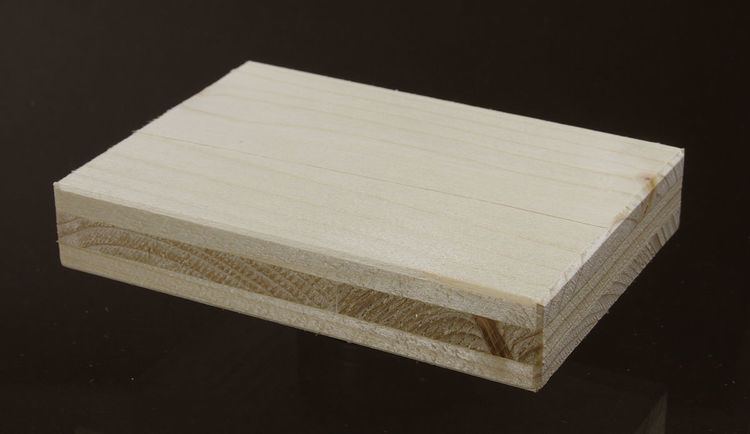 | ||
Cross-laminated timber (CLT) is a wood panel product made from solid-sawn lumber. Each layer of boards are orientated perpendicular to adjacent layers and glued on the wide faces of each board, usually in a symmetric way so that the outer layers have the same orientation. An odd number of layers is most common but there are configurations with even numbers as well (which are then arranged to give a symmetric configuration). The cross gluing allows using the panels with two span directions whereby some differences in stiffness and strength are observed along the two directions. It is similar to plywood but with distinctively thicker laminations.
CLT must not be confused with glued laminated timber (GLT), a product with all laminations orientated in the same way.
CLT is claimed to be as strong and fire-resistant as structural steel or concrete. In 2016, plans were proposed for a 40-storey CLT building in Stockholm and a 100-storey tower in London.
In September 2016 the world's first timber mega-tube structure was built at the Chelsea College of Arts in London, using hardwood CLT panels. The 115 feet (35 m) long "Smile" was designed by architect Alison Brooks and engineered by Arup, in collaboration with the American Hardwood Export Council, for the London Design Festival.
With it's 3,852 cubic metres of CLT, Dalston Lane at Dalston Square is the largest CLT project globally. The project finishes in 2017. Ramboll carried out full structural engineering and the design of the 33m CLT structure.
